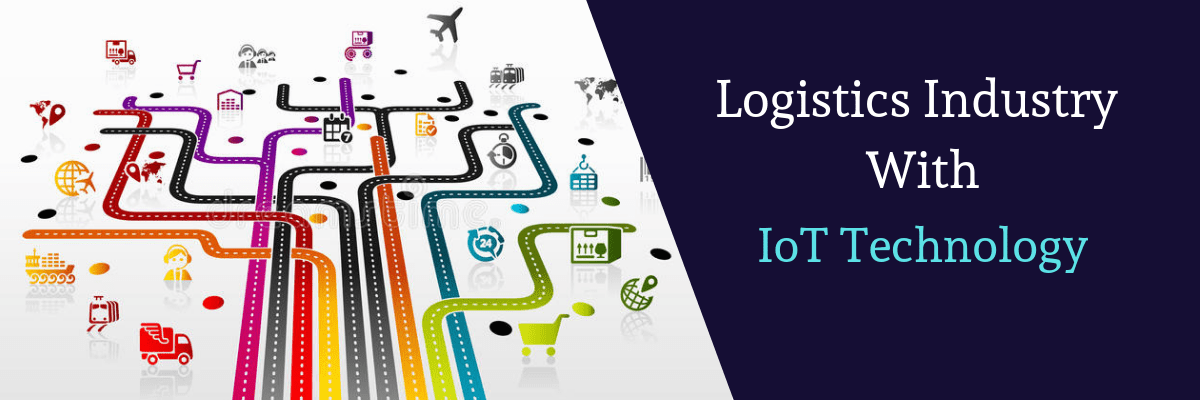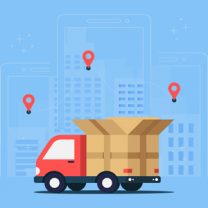What Is the Future of IoT?
The term ‘Internet of things’ was first coined by Kevin Ashton in 1999. Today, IoT has become a reality, and we have seen its application in transportation systems, robotics as well as manufacturing processes.
According to Ashton, the value of IoT is expected to grow every year. He further says that although IoT is over? years in, it’s not even 17% done yet.
Predictions also point that the growth of IoT is expected to experience hypersonic growth and reach 50 billion objects by the year 2020. So what are the applications of IoT and what should we expect from its growth in the years to come?
How Can IoT Help in Warehouse Management? IoT plays an integral part in the growth of the logistics industry. It provides for smarter warehouse management by tightening supply processes using sensors and intelligence devices.
This result is streamlining planning and service delivery in the warehouses and therefore reduce costs. Below are ways in which IoT technology helps in the warehouses.
1. Security
Security is an essential part of warehouse management. Raising warehouse security will help to keep your assets secure by preventing theft.
IoT technology can help you enhance the security of your warehouse. For instance, Video surveillance cameras and sensors use IoT technology to help you detect theft in the warehouse. Remote alarm monitoring can also help you monitor video data at any given time across different locations.
Similarly, you can use text message alert systems to notify you in case of any access to restricted areas by sending alerts, thanks to IoT.
2. Safety
While safety is a crucial aspect of warehouse management, most logistics companies find it challenging to ensure the safety of their employees. However, companies that have turned to the use of IoT in protecting their staff have managed to reduce accidents to a great extent.
A company like Union Pacific, for example, uses IoT to monitor equipment and predict possible failures. The company uses sensors to monitor the operation of train wheels. As a result, Union Pacific has been able to reduce derailment risks which have helped in curbing work-related accidents.
By using IoT, equipment can alert you of any defects before there is interaction with humans. This has dramatically reduced risks of accidents and therefore improving the safety of workers in a warehouse.
3. Improved Performance
IoT allows for interconnectivity of devices. Interconnected systems allow for better management of your warehouse which is essential for business growth.
Companies that use IoT have better control of the warehouse as they have a full view of their business. This technology allows you to have a view of an entire warehouse. You can easily see the available inventory in the warehouse as well as activities that take place. This has ensured proper use of resources like equipment in the warehouse which has helped businesses to improve the productivity of their warehouse.
Role of IoT in Improving Delivery?
Delivery is at the heart of logistics. Logistics companies can leverage IoT to achieve increased efficiency in supply chain management. Below is how IoT can help companies in improving delivery.
1. Real-time Tracking
One way IoT has revolutionized the logistics industry is by allowing for real-time tracking. Companies like Amazon use RFID tags to enable customers to track their goods from the time they purchase the products to the moment they are delivered.
Radio frequency identification tags have an integrated circuit that helps to transmit data to users. This allows the customers to detect the location of their goods without the help of the staff. According to RFID Journal, this IoT technology gives up to 95% accuracy in stock keeping.
Real-time tracking of fleet enables for quick deliveries, monitoring fuel cost, as well as diagnostics. Logistics companies can also check the performance of their drivers and vehicles. This can help increase safety and reduce inventory damage.
2. Predictive Analytics
If you want to achieve business growth in the logistics industry, using predictive analytics with IoT is a must. In addition to acquiring large amounts of data from several connected devices, IoT can assist you to use this data to benefit your logistics business.
Big data can help you to determine the best routes for your fleet as well as the efficiency of your drivers. Besides, you can identify inefficiencies and improve your business processes.
You can also gather valuable data on your machines. Predictive analytics will help you to determine the right time to carry out maintenance on your devices based on this data This is essential to prevent unexpected breakdowns and therefore inconvenience to regular schedules.
With predictive analytics, you can also cut on operation costs. Because you can anticipate fluctuation in demand, you are able to create more accurate schedules. This reduces over staffing and understaffing which might require overtime which is always very expensive.
3. Delivery
Many conditions including treacherous roads and bad weather can lead to late deliveries. Logistics companies can help avert such problems by being proactive.
Some IoT technology used by logistic companies to stay proactive is GPS and RFID. GPS and RFID data helps companies to stay informed of all delays that are on the way. Consequently, they are able to find alternative routes.







![The Game Marketing Guide: Pre and Post-Launch Strategies [Infographic]](https://www.dotcominfoway.com/wp-content/uploads/2023/09/DCI-Game-Marketing-blog-1.jpg)















